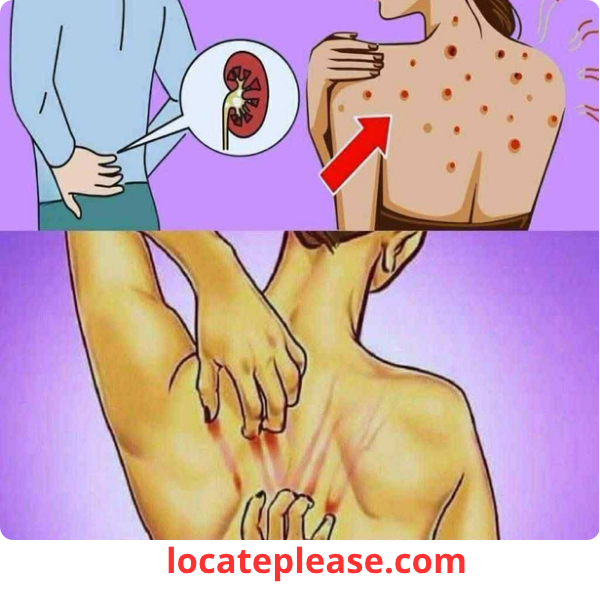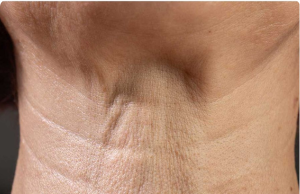Your kidneys are silent heroes — working 24/7 to filter waste, balance fluids, regulate blood pressure, and produce vital hormones. Yet, most people never think about them… until something goes wrong.
Kidney disease is often called a “silent killer” because symptoms can be subtle — or absent — until the damage is advanced. By the time many people realize their kidneys are struggling, the disease may have already progressed to a dangerous stage.
The good news?
👉 Early detection can prevent kidney failure.
Recognizing the warning signs is the first step toward protecting your health. Here are 10 red flags that your kidneys may be in trouble — and what you should do next.
Understanding the Role of Your Kidneys
Your kidneys are two bean-shaped organs, each about the size of a fist, located just below your ribcage on either side of your spine.
They filter 120–150 quarts of blood every day, removing waste and excess fluid through urine (about 1–2 quarts). They also:
- Balance electrolytes (sodium, potassium, calcium)
- Regulate blood pressure
- Stimulate red blood cell production
- Help maintain strong bones
When kidney function declines, toxins build up in your body — and every system pays the price.
What Is Kidney Disease?
Kidney disease (also called chronic kidney disease, or CKD) occurs when your kidneys are damaged and can no longer do their job effectively.
Top Causes:
- Diabetes (the #1 cause)
- High blood pressure (the #2 cause)
- Autoimmune diseases (like lupus)
- Genetic conditions (e.g., polycystic kidney disease)
- Long-term use of painkillers (NSAIDs)
- Recurrent infections or kidney stones
Without treatment, CKD can lead to kidney failure, requiring dialysis or a transplant.
But catching it early can slow or even stop its progression.
10 Warning Signs Your Kidneys May Be in Danger
1. Changes in Urination
This is often the first noticeable sign of kidney trouble. Watch for:
- Frequent urination, especially at night (nocturia)
- Decreased urine output
- Foamy, bubbly, or dark-colored urine (a sign of protein or blood in urine)
- Pain or difficulty urinating
💡 Foam in urine? It could mean protein leakage — a key sign of kidney damage.
2. Fatigue and Weakness
Kidneys produce erythropoietin, a hormone that tells your body to make red blood cells.
When kidneys fail, anemia sets in — leading to:
- Constant tiredness
- Trouble concentrating
- Pale skin
- Shortness of breath
“I just can’t shake this exhaustion” — a common complaint in early kidney disease.
3. Swelling (Edema)
When kidneys can’t remove excess fluid and sodium, fluid builds up in tissues.
Look for swelling in:
- Legs, ankles, and feet
- Hands and fingers
- Face (especially around the eyes)
- Abdomen
This puffiness is a clear sign your kidneys are struggling.
4. Persistent Back or Side Pain
Dull, deep pain below the ribs on one or both sides may signal:
- Kidney stones
- Infection (pyelonephritis)
- Cysts or tumors
Unlike muscle pain, kidney pain is constant and not relieved by changing position.
5. Unexplained Weight Loss & Loss of Appetite
As waste builds up in the blood (uremia), you may:
- Feel full quickly
- Lose interest in food
- Experience unintentional weight loss
This is common in advanced kidney disease.
6. Nausea and Vomiting
Toxins in the bloodstream can irritate the stomach lining, leading to:
- Morning nausea
- Vomiting after meals
- Metallic taste in the mouth (see #8)
These symptoms are often mistaken for digestive issues — but they could be kidney-related.
7. Difficulty Sleeping
Kidney problems disrupt sleep in several ways:
- Frequent nighttime urination
- Restless leg syndrome (linked to iron and dopamine imbalances)
- Muscle cramps at night
- Sleep apnea (common in CKD patients)
Poor sleep can worsen kidney health — creating a dangerous cycle.
8. Metallic Taste in the Mouth
A persistent metallic or ammonia-like taste is a classic sign of uremia — when waste products build up in the blood.
You may also notice:
- Bad breath (ammonia odor)
- Changes in taste — food tastes “off” or bland
9. Muscle Cramps and Twitching
Kidneys help balance calcium, phosphorus, and electrolytes.
When they fail, imbalances occur — leading to:
- Painful leg cramps
- Muscle twitching
- Tingling or numbness
Low calcium and high phosphorus levels are common in kidney disease.
10. Itchy, Dry Skin
When kidneys can’t filter waste properly, toxins accumulate in the blood — irritating the skin.
This leads to:
- Generalized itching (especially at night)
- Dry, flaky skin
- Discoloration or rash
Unlike regular dry skin, this itch won’t go away with lotion.
How to Reduce Your Risk of Kidney Disease
You can protect your kidneys — even if you’re at risk.
✅ Control Blood Sugar – If you have diabetes, keep glucose levels in range
✅ Manage Blood Pressure – Aim for under 130/80 mmHg
✅ Stay Hydrated – Drink water throughout the day (unless advised otherwise)
✅ Limit Salt & Processed Foods – High sodium strains the kidneys
✅ Avoid Long-Term NSAIDs – Drugs like ibuprofen and naproxen can damage kidneys
✅ Get Regular Check-Ups – Blood and urine tests can detect kidney issues early
When to See a Doctor
If you’re experiencing two or more of these symptoms, don’t wait.
Schedule an appointment with your doctor and request:
- Blood test (creatinine, eGFR)
- Urine test (for protein or blood)
- Blood pressure check
Early diagnosis can save your kidneys — and your life.
Final Thoughts: Listen to Your Body
Your kidneys don’t scream when they’re in trouble — they whisper.
Fatigue. Swelling. Changes in pee.
These aren’t just “normal aging” — they could be life-saving signals.
By recognizing the warning signs early, you can:
- Prevent kidney failure
- Avoid dialysis
- Live a longer, healthier life
So if something feels off…
👉 Don’t ignore it.
👉 Get tested.
👉 Take action.
Because when it comes to your kidneys, silence isn’t golden — it’s dangerous.
Your kidneys work hard for you. It’s time to return the favor.










